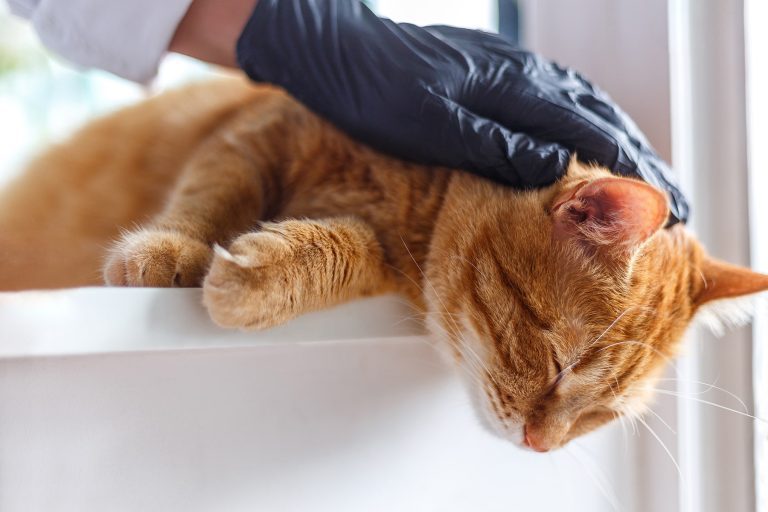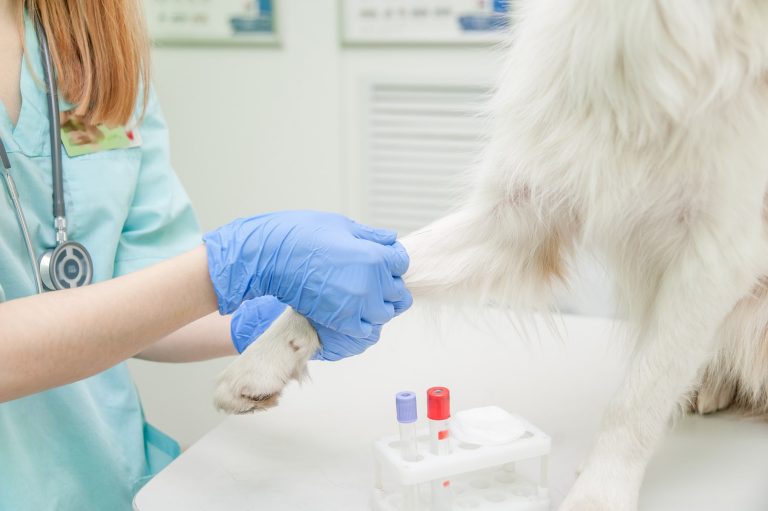This Article Will Address:
- How emergency vets identify internal injuries in pets
- The signs of internal bleeding to watch for
- How trauma-related injuries are evaluated
- The role of imaging (X-rays, ultrasound, CT, MRI) in emergency diagnostics
- How Summit Veterinary Urgent Care handles emergency cases
- When to bring your pet to urgent care
How Do Emergency Vets Diagnose Internal Injuries?
At Summit Veterinary Urgent Care in Decatur, AL, we understand how frightening it is when your pet is hurt and you don’t know the full extent of the damage. Internal injuries can be especially difficult for pet owners to recognize—there are no visible wounds, and pets often hide their pain.
Our veterinary team, led by Dr. Lauren Smith, is trained in emergency and critical care. We use advanced diagnostic tools like X-rays, ultrasound, bloodwork, and a triage-first approach to detect internal trauma quickly and accurately. Whether your pet has suffered an accident or is showing sudden concerning symptoms, our priority is to stabilize and assess them with care, speed, and precision.
Walk in or call us at (256-937-7776) for immediate care—no appointment needed.
What Are the Signs of Internal Bleeding in Pets?
Internal bleeding isn’t always obvious, but the symptoms can escalate quickly. You should seek emergency care immediately if your pet is showing any of the following:
- Pale gums
- Sudden weakness or collapse
- Swollen or bloated abdomen
- Fast or shallow breathing
- Vomiting (with or without blood)
- Visible bruising on the belly or chest
- Behavioral changes like restlessness, hiding, or vocalizing
These signs could indicate serious internal trauma. At Summit Veterinary Urgent Care, we perform rapid assessments to determine whether internal bleeding is present and take action right away.
How Do Vets Detect Internal Injuries After Trauma?
When a pet comes in after trauma—such as being hit by a car or falling from a height—our team uses a structured, step-by-step diagnostic process:
- Triage evaluation to prioritize critical cases
- Abdominal palpation to detect swelling or pain
- Vital sign monitoring (heart rate, breathing, gum color)
- FAST scan (Focused Assessment with Sonography for Trauma) to detect free fluid
- Bloodwork to check for signs of organ damage or internal bleeding
- Radiographs (X-rays) to evaluate bones and chest/abdomen
- Ultrasound to visualize soft tissue and organs
This multi-layered approach helps us quickly identify internal damage and choose the right next steps for your pet’s care.
What Role Does Imaging Play in Diagnosing Pet Injuries?
Imaging is one of the most important tools we use in emergency medicine because it allows us to “see inside” your pet without invasive procedures. Here’s how it helps:
- X-rays reveal fractures, gas buildup, organ displacement, or hidden trauma
- Ultrasound shows soft tissue injuries, bleeding, and fluid accumulation
- CT or MRI (used in referral hospitals) provides detailed 3D views for complex injuries
At Summit Veterinary Urgent Care, we use digital X-rays and ultrasound in-house to quickly and accurately assess your pet’s condition. If more advanced imaging is needed, we stabilize your pet and coordinate a referral to a specialty hospital.
Can an Emergency Vet Detect a Ruptured Organ?
Yes—and timing is critical. A ruptured organ like the spleen, bladder, or intestines can lead to severe internal bleeding, infection, or even organ failure. Emergency vets look for:
- Sudden abdominal swelling or pain
- Signs of internal bleeding on ultrasound
- Changes in blood pressure and bloodwork results
- Symptoms like collapse or difficulty breathing
At Summit, we act quickly to identify ruptures and either begin treatment or refer your pet for surgery if needed. Early diagnosis can mean the difference between recovery and irreversible damage.
How Do CT Scans and MRIs Help in Pet Emergencies?
While not commonly found in urgent care settings, CT and MRI are powerful tools for diagnosing more complex issues. These are typically used in specialized referral hospitals and can help identify:
- CT scans: Bone fractures, internal bleeding, tumors, and organ trauma
- MRIs: Brain and spinal cord injuries, neurological disorders, and soft tissue damage
If our team believes your pet needs a CT or MRI, we’ll stabilize them and refer you to a trusted 24/7 facility for further diagnostics and care.
When Should You Bring Your Pet to an Emergency Vet?
Every minute counts during a true emergency. You should seek urgent veterinary care immediately if your pet has:
- Experienced trauma (e.g., hit by car or fall)
- Ingested a toxin or foreign object
- Trouble breathing
- Seizures or collapse
- Persistent pain, swelling, or unusual behavior
- Suspected internal bleeding
If you’re unsure whether your pet’s condition is an emergency, it’s always better to err on the side of caution. Walk into Summit Veterinary Urgent Care, we’re here to help, no appointment required.
How Summit Veterinary Urgent Care Handles Emergency Diagnoses
Our emergency care model is built on speed, compassion, and clarity. Here’s how we work:
- Species-inclusive care: Dogs, cats, small mammals, ruminants, and more
- Urgent triage system to prioritize critical conditions
- In-house diagnostics with X-ray and ultrasound
- Fear-free handling and owner participation to reduce stress
- Stabilization and referral when specialized care is needed
We take time to explain what’s happening and involve you in each decision—because your pet’s safety and your peace of mind go hand-in-hand.
Why Pet Owners in North Alabama Trust Summit Veterinary Urgent Care
We’re proud to be a trusted partner for pet owners in Decatur, Priceville, Huntsville, and beyond. Here’s why families choose us:
- Local, compassionate care from Dr. Lauren Smith, DVM
- Specialized experience in emergency and urgent care
- Clear communication and low-stress environment
- Conveniently located on the Priceville/Decatur line
- Walk-ins welcome — no appointment ever required
Know the Signs, Act Fast by Scheduling an Appointment Immediately
Internal injuries can be life-threatening, but fast action and expert diagnostics can save your pet’s life. At Summit Veterinary Urgent Care in Decatur, AL, we’re here when it matters most—providing compassionate, species-inclusive, and efficient care using advanced tools and a fear-free approach.
If your pet is hurt, don’t wait. Contact our veterinary urgent care clinic to speak with our team.






